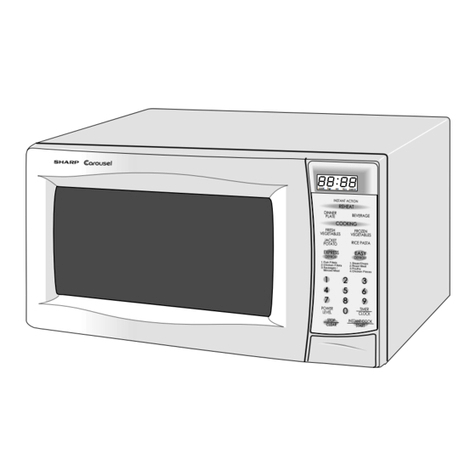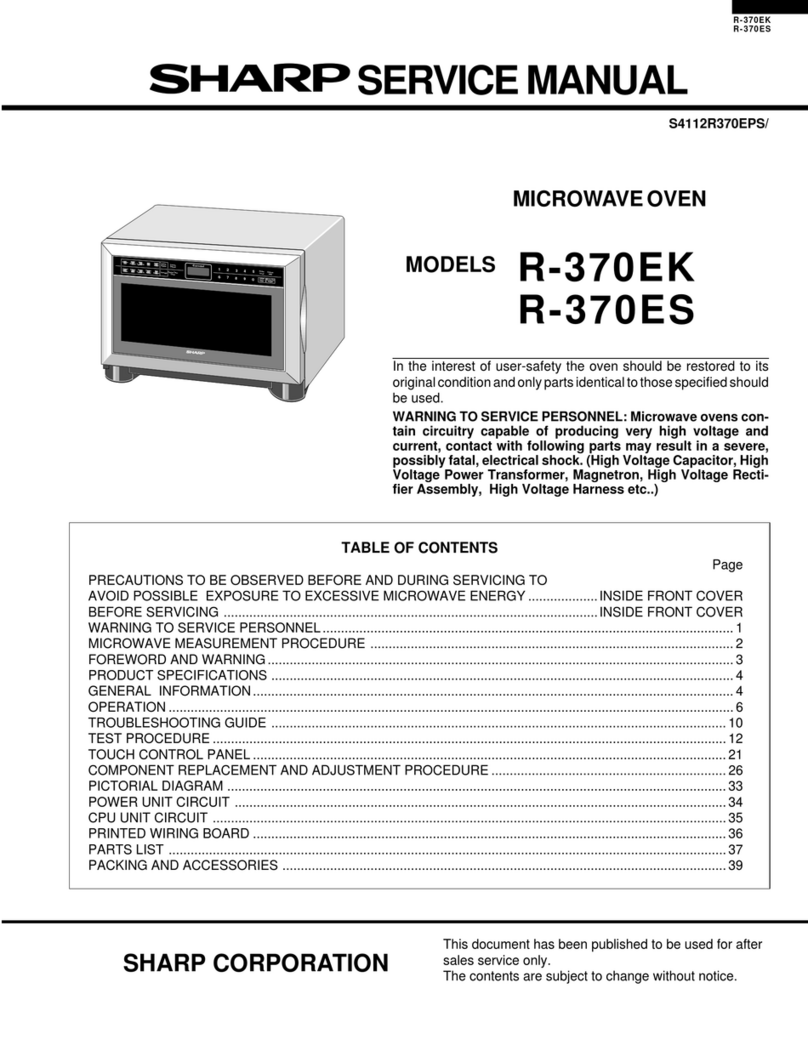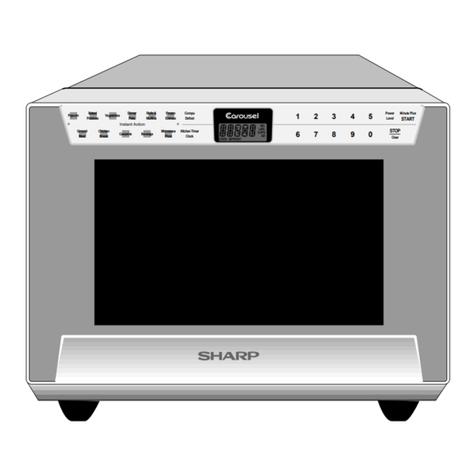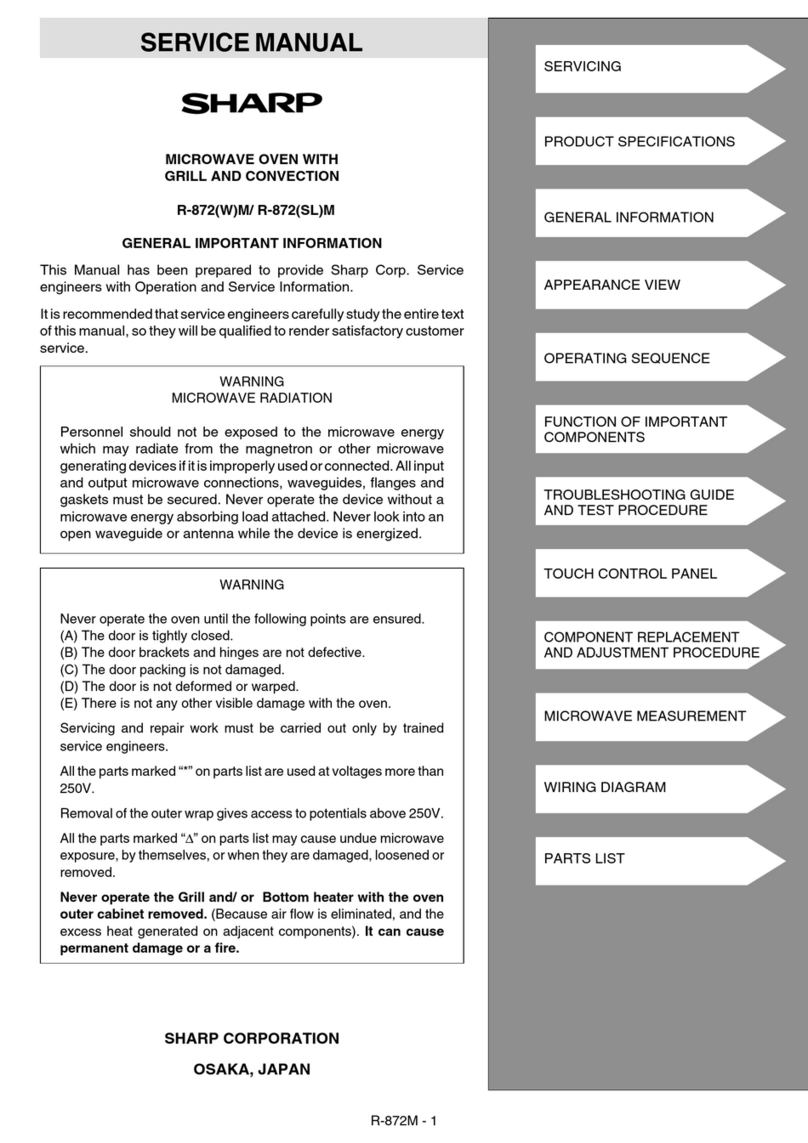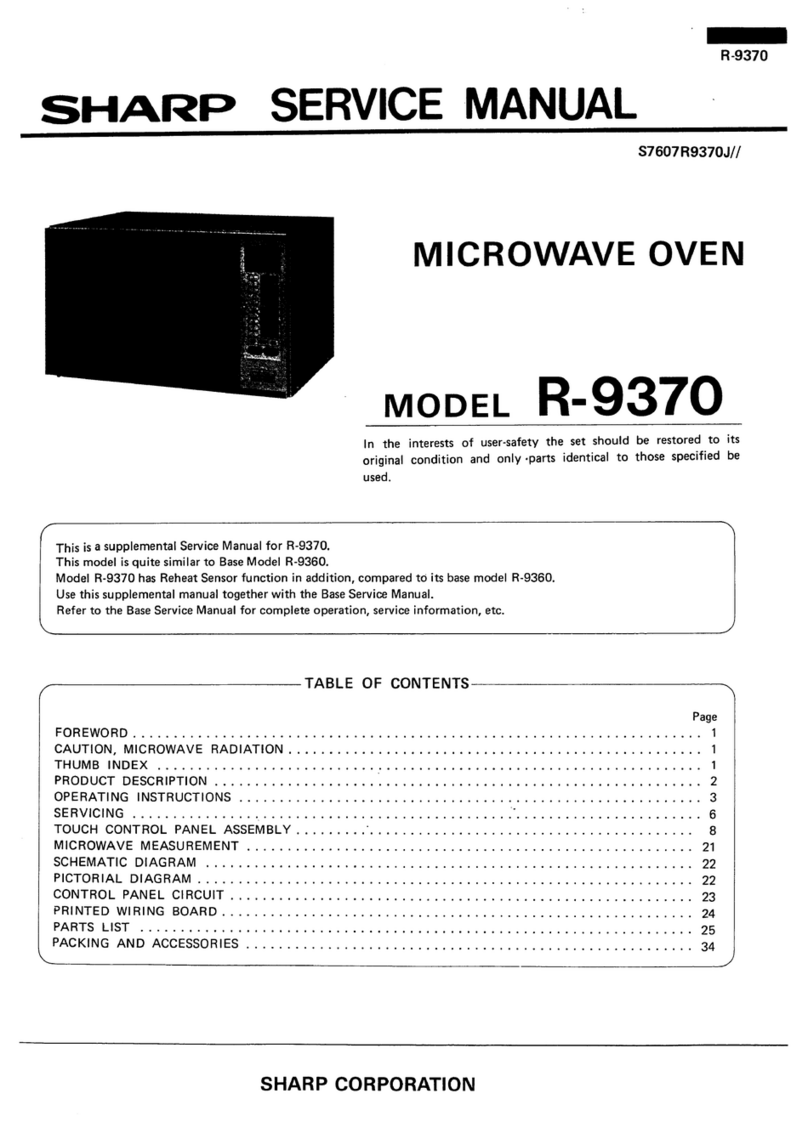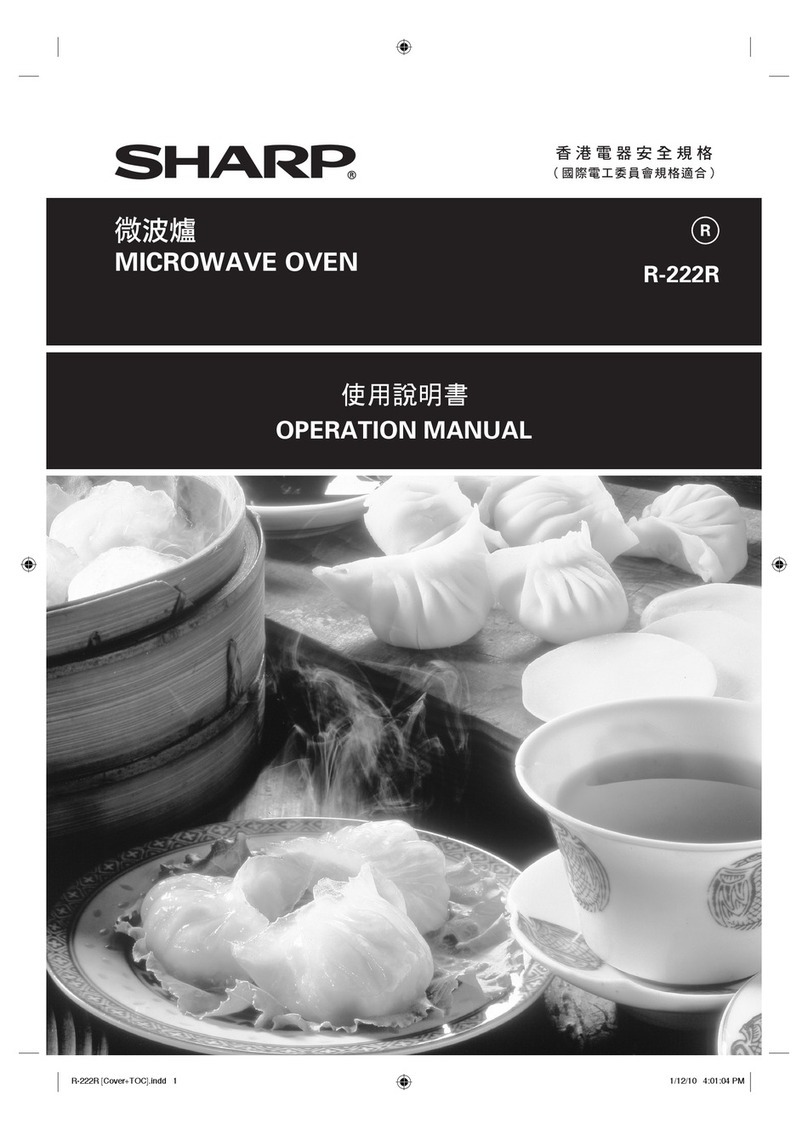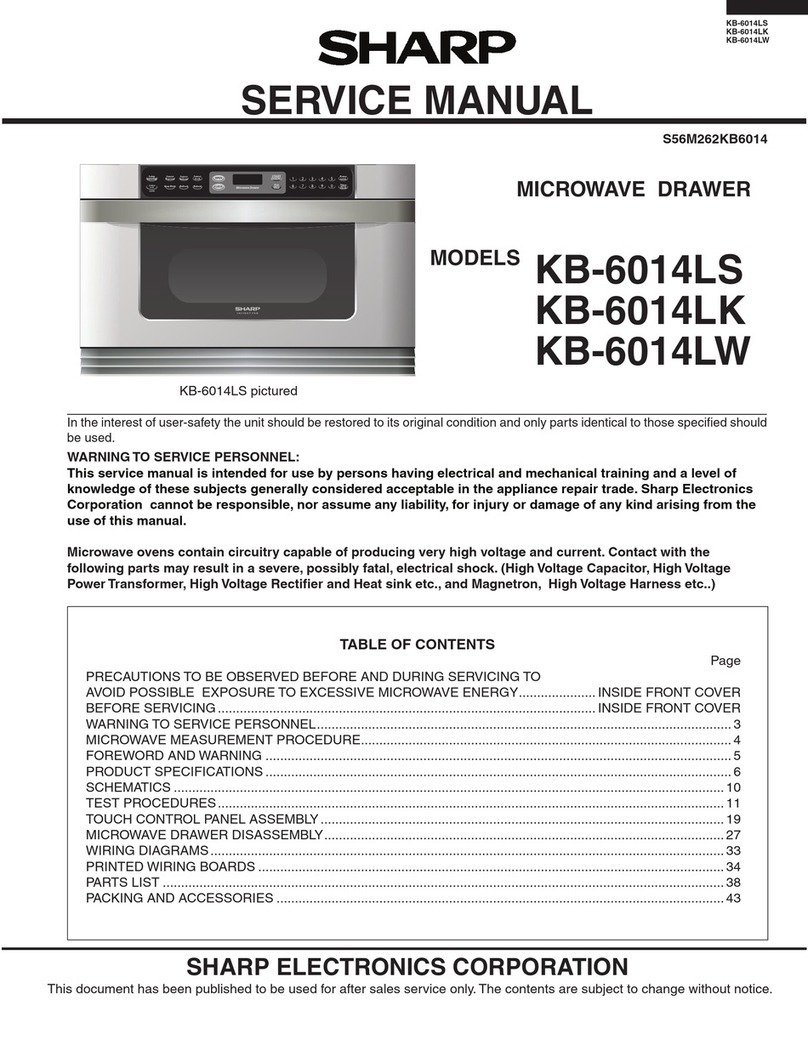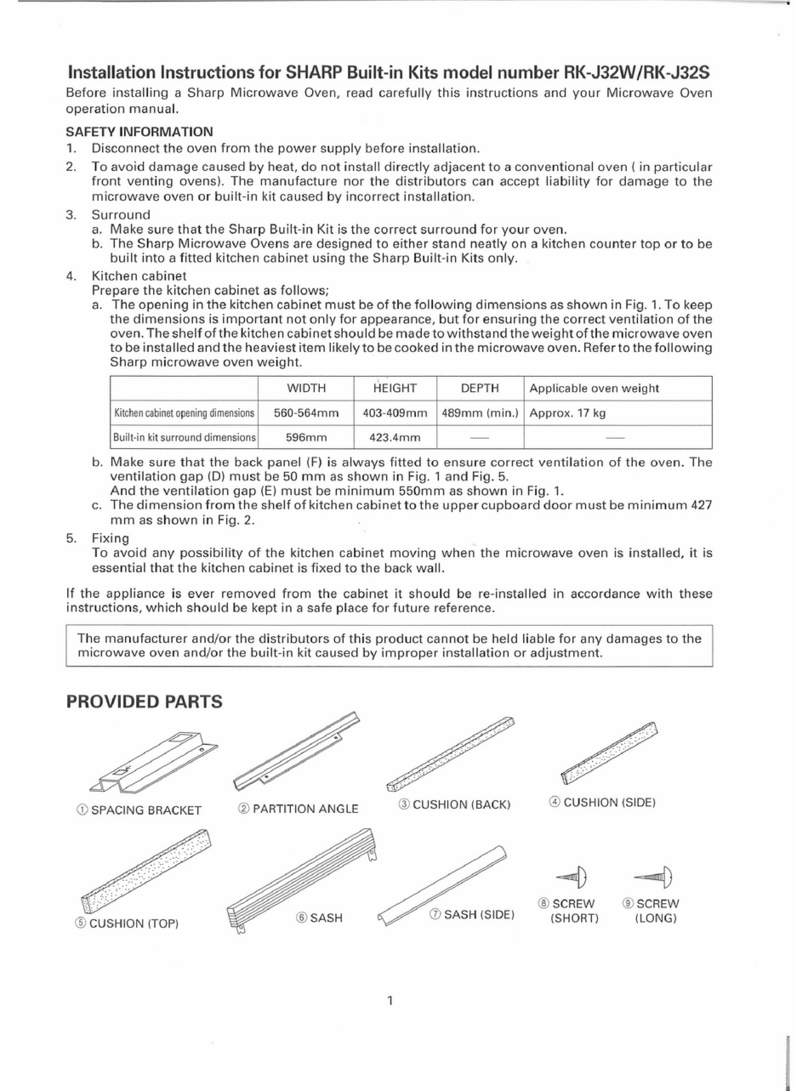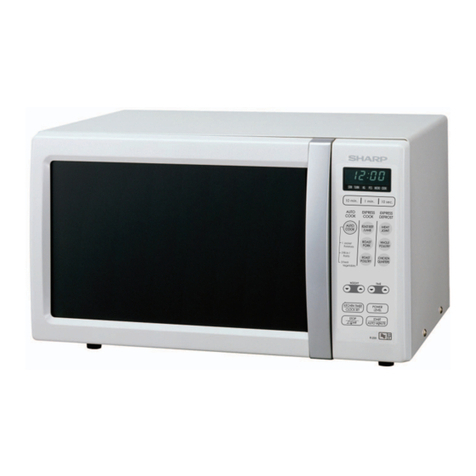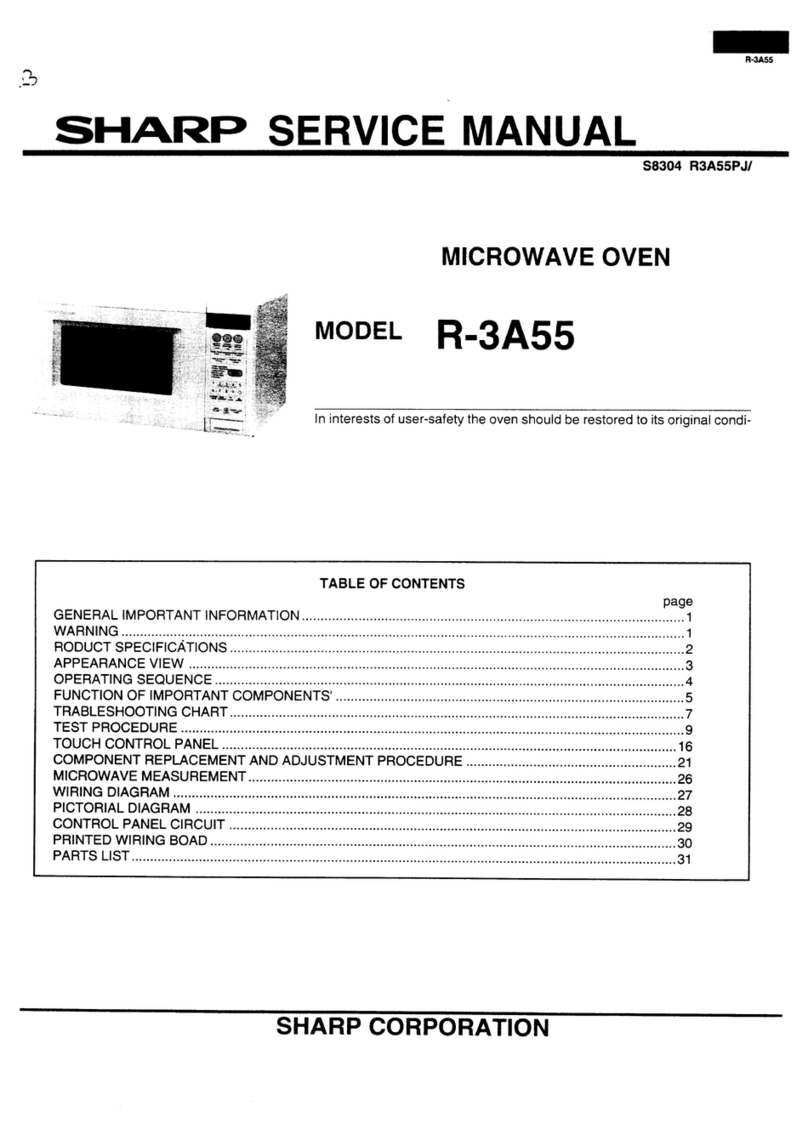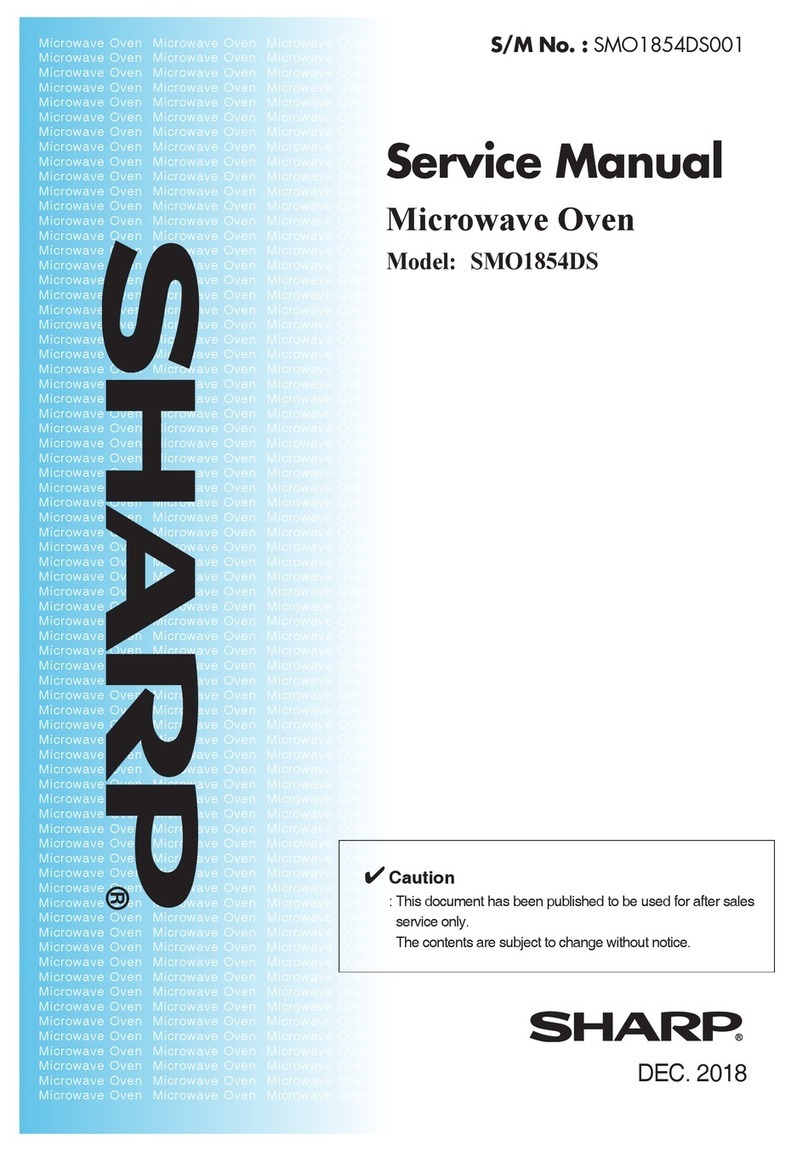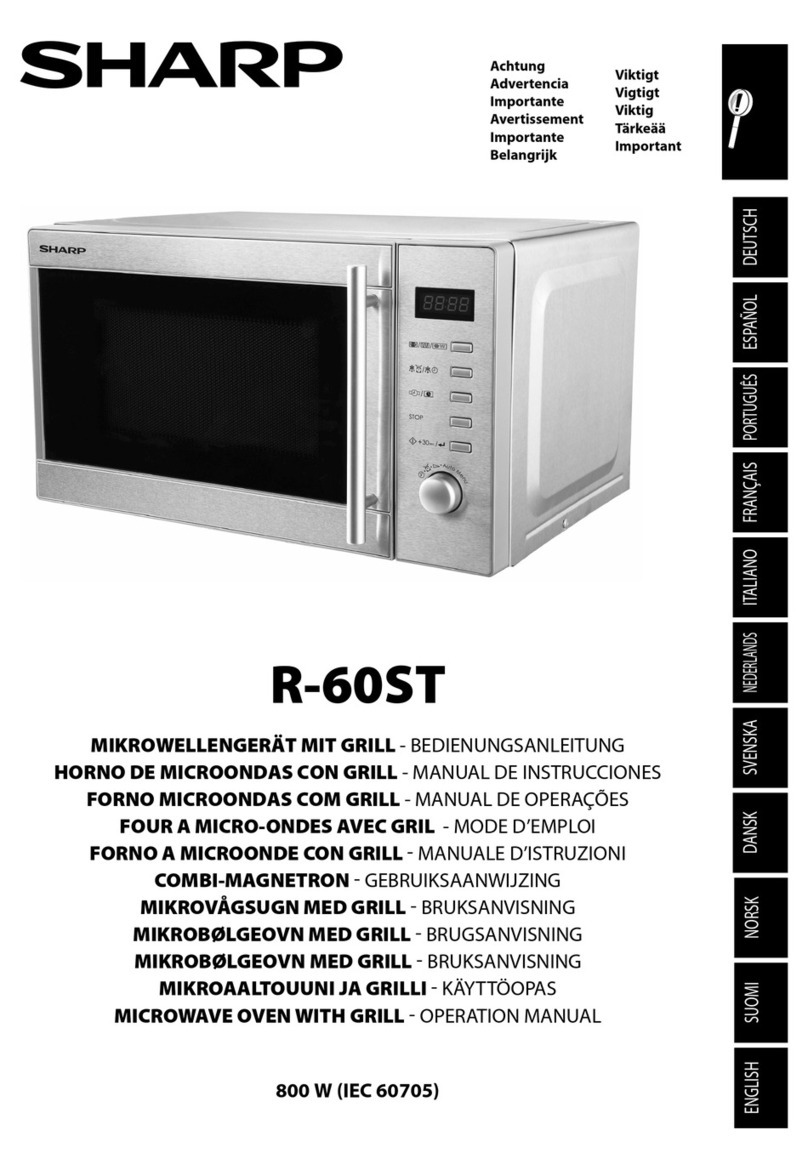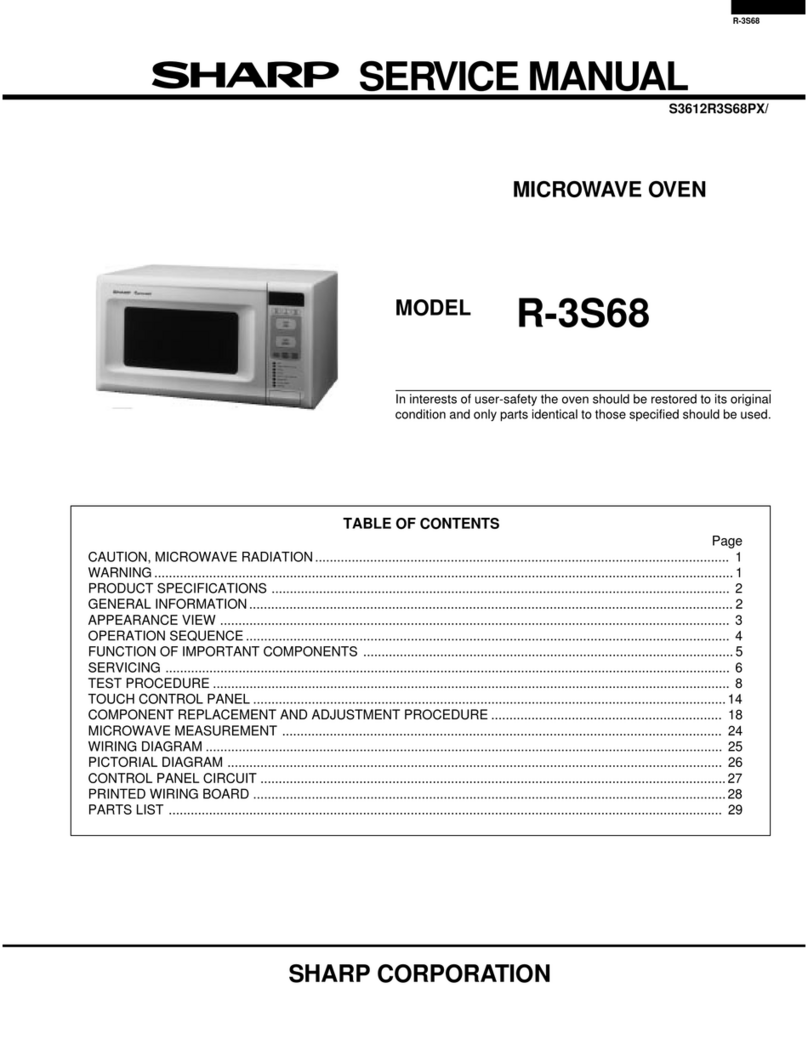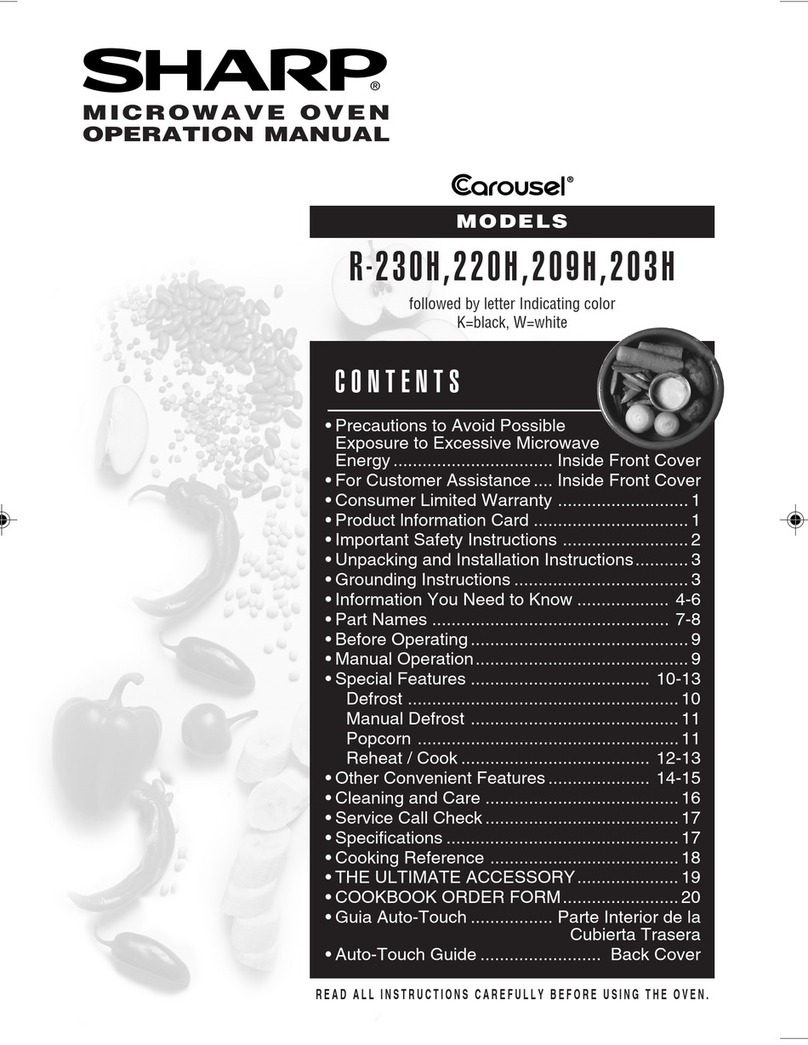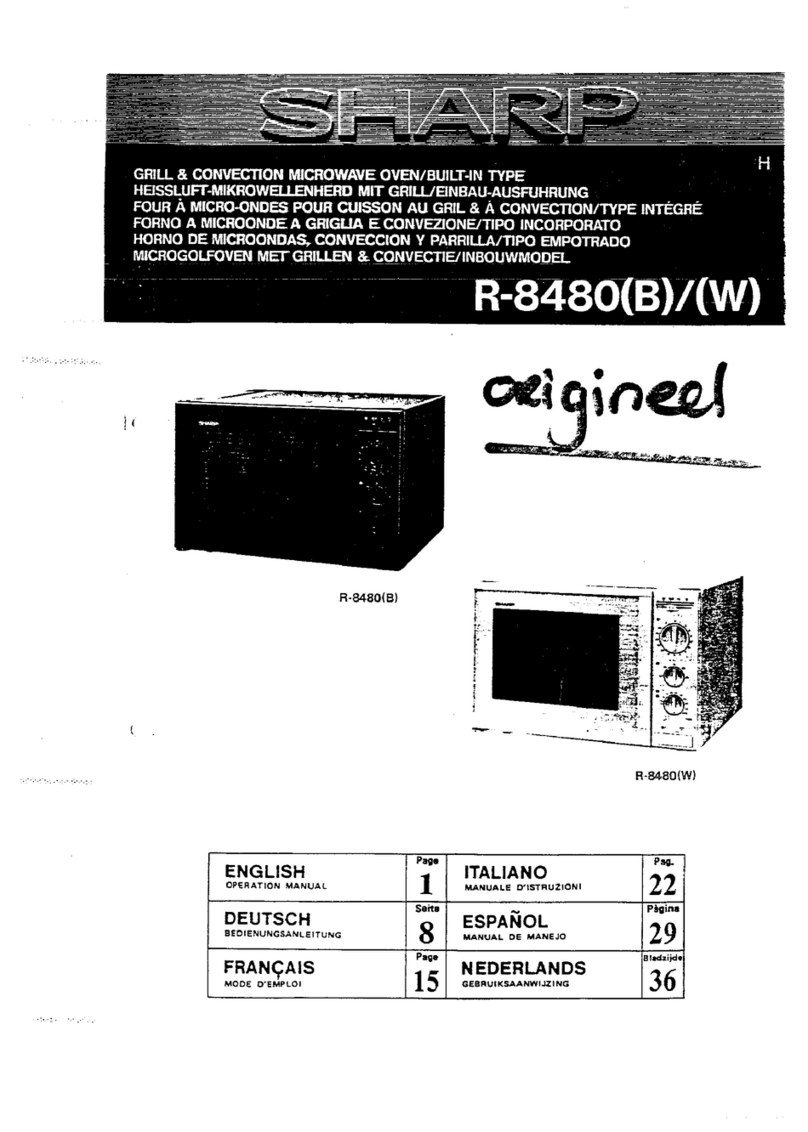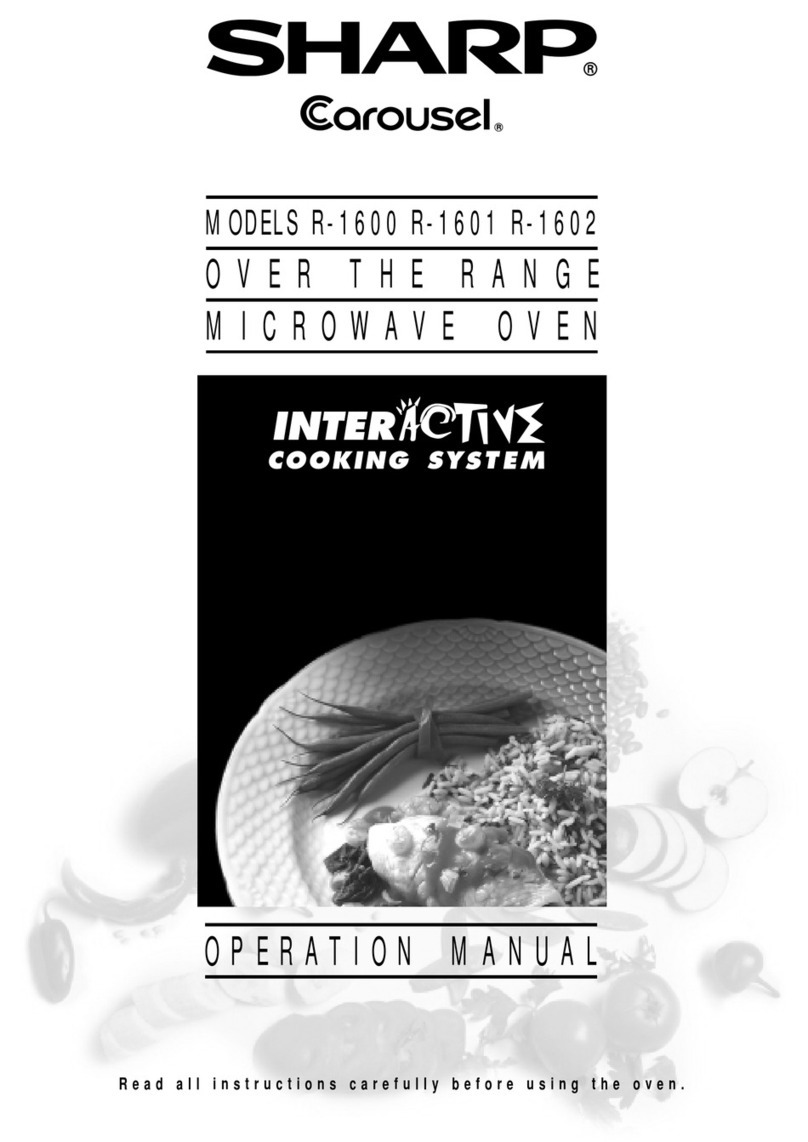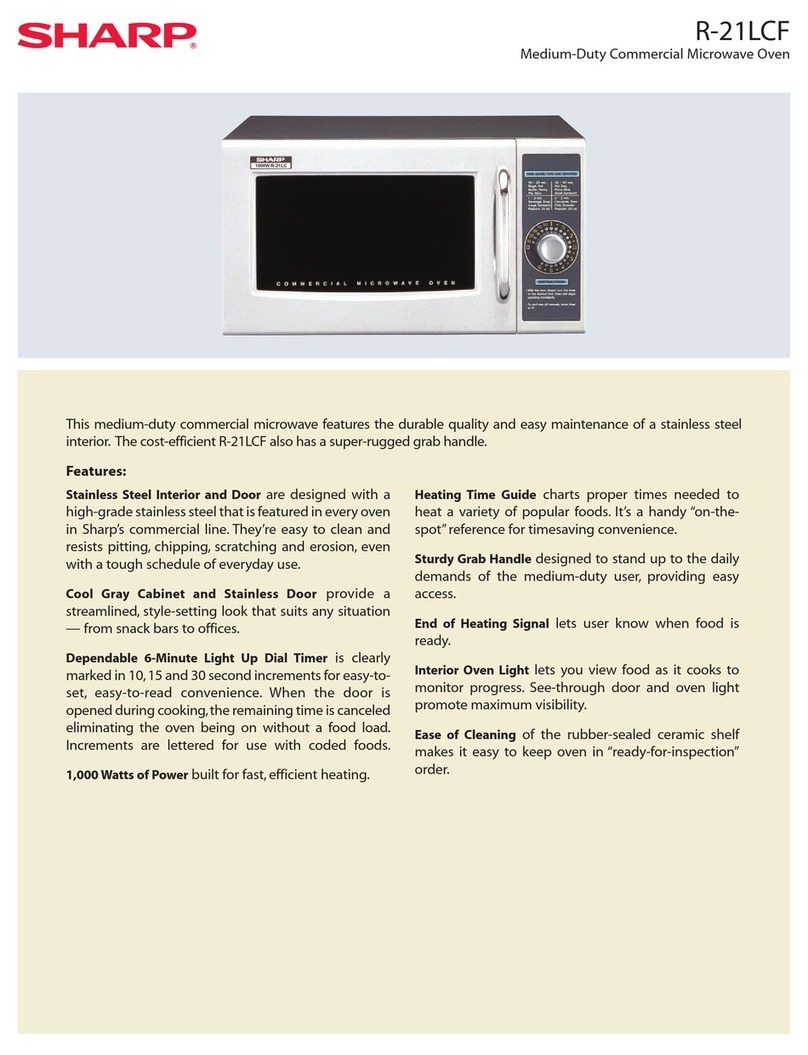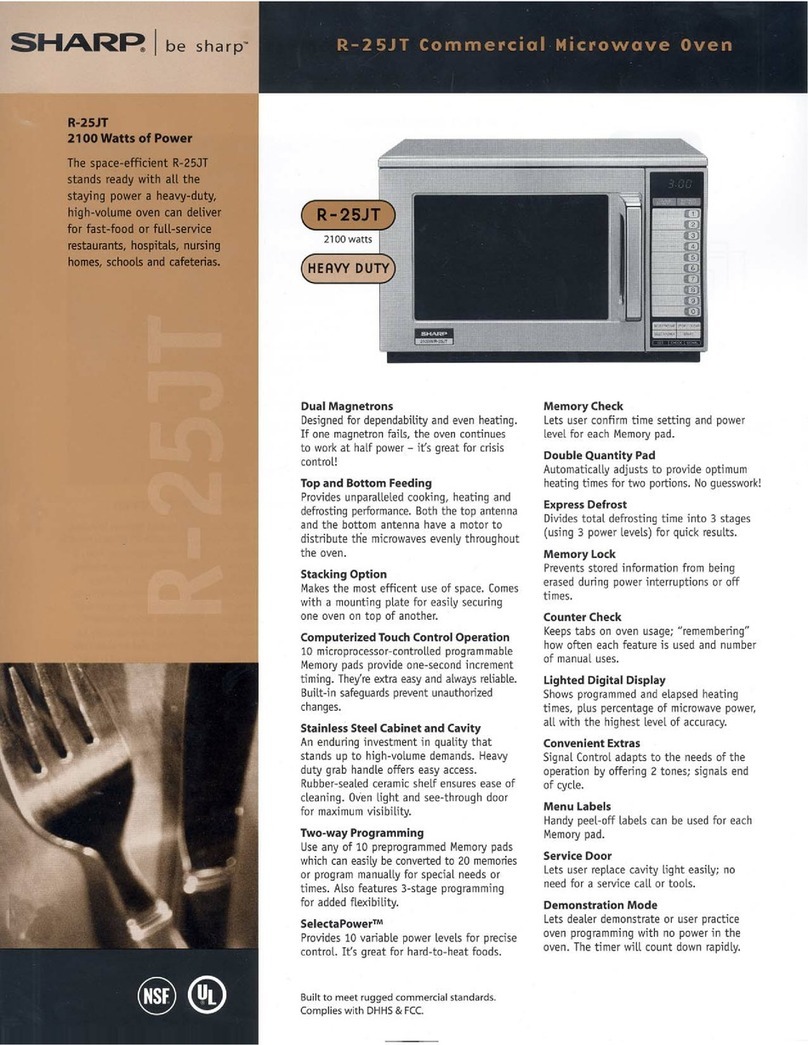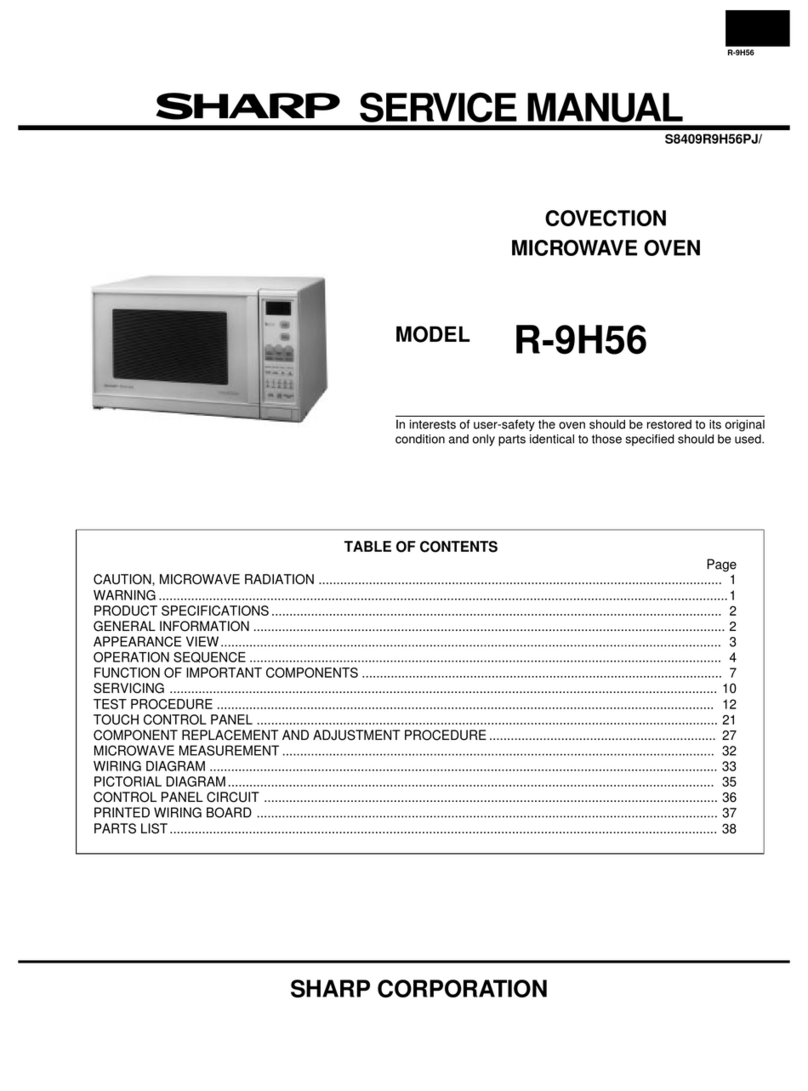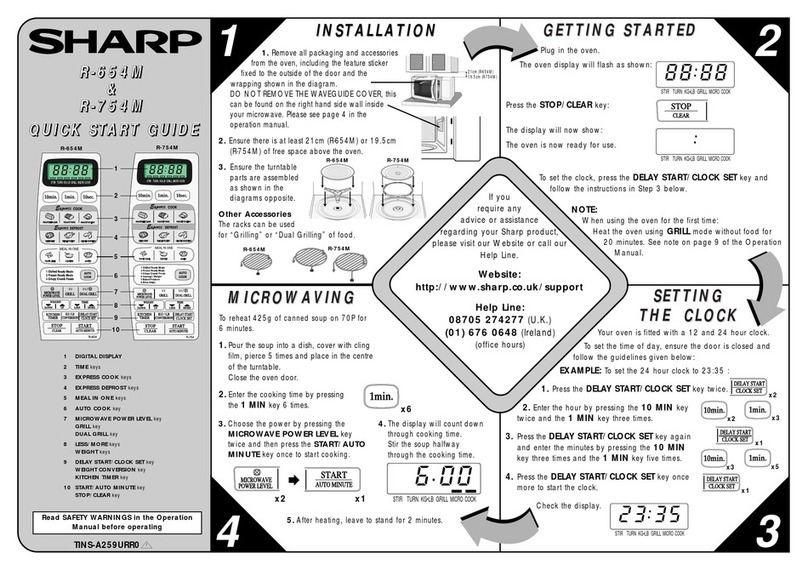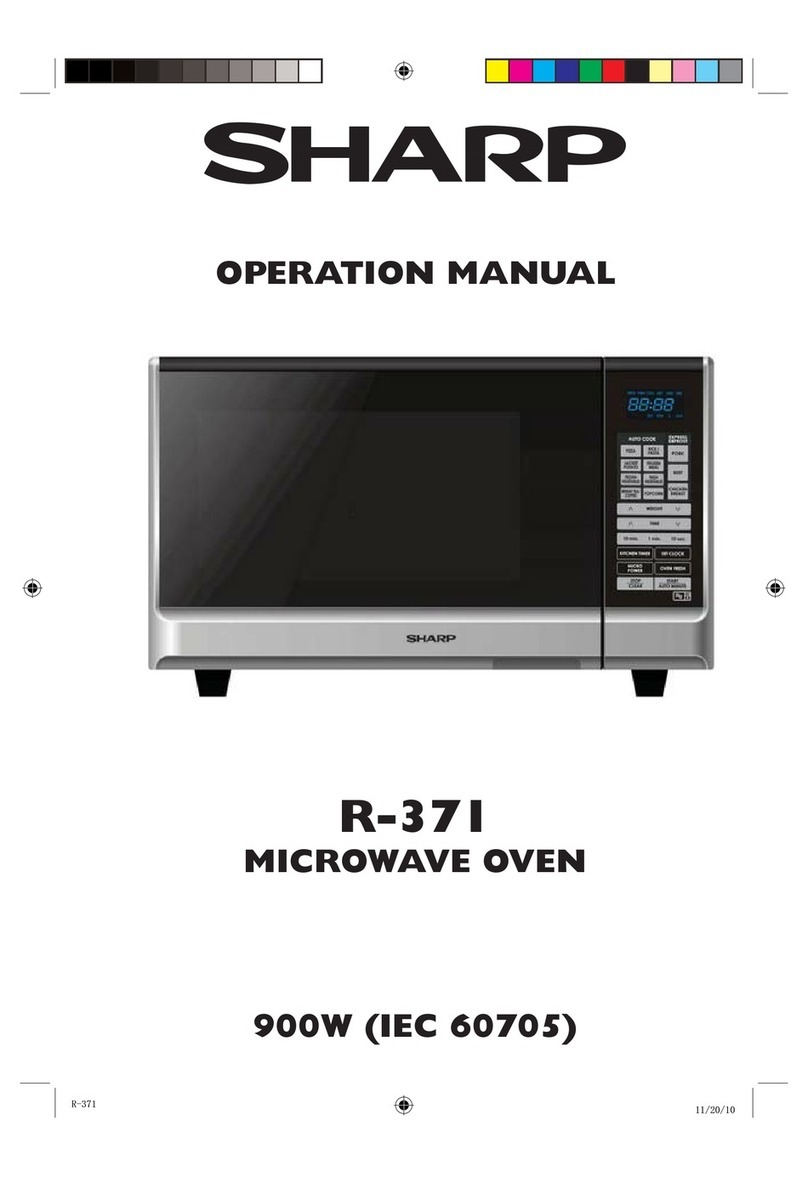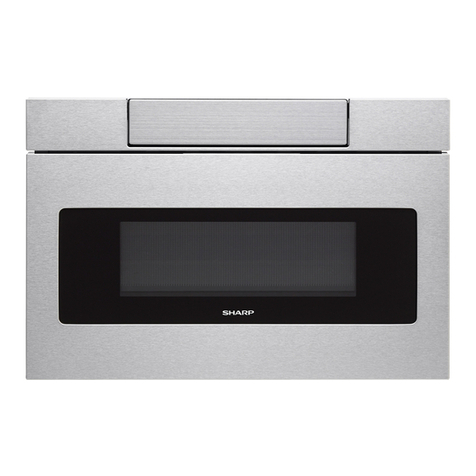R-430BK
R-430BW
R-430BD
WARNING TO SERVICE PERSONNEL
Microwave ovens contain circuitry capable of
producing very high voltage and current. Con-
tact with following parts may result in a severe,
possibly fatal, electrical shock.
(EXAMPLE)
High Voltage Capacitor, High Voltage Power
Transformer, Magnetron, High Voltage Rectifier
Assembly, High Voltage Harness etc..
Read the Service Manual carefully and follow all
instructions.
Danger High Voltage
Before Servicing
1. Disconnect the power supply cord and then remove
outer case
2. Open the door and block it open.
3. Discharge the high voltage capacitor.
WARNING:RlSK OF ELECTRICAL SHOCK. DISCHARGE
THE HIGH VOLTAGE CAPACITOR BEFORE SERVICING.
The high-voltage capacitor remains charged about 60 se-
conds after the oven has been switched off. Wait for 60 se-
conds and then short-circuit the connection of the high volt-
age capacitor (that is the connecting lead of the high voltage
rectifier) against the chassis with the use of an insulated
screwdriver.
Whenever troubleshooting is performed, the power sup-
ply must be disconnected. In some cases it may be nec-
essary to connect the power supply after the outer case
has been removed, in this event:
1.
2.
3.
4.
5.
6.
Disconnect the power supply cord, and then remove
outer case cabinet.
Open the door and block it open.
Discharge the high voltage capacitor.
Disconnect the leads to the primary of the power
transformer.
Ensure that the leads remain isolated from other
components and oven chassis by using insulation
tape.
After the above procedure, reconnect the power sup-
ply cord.
When the testing is completed
1. Disconnect the power supply cord and then remove
outer case cabinet.
2. Open the door and block it open.
3. Discharge the high voltage capacitor.
4. Reconnect the leads to the primary of the power
transformer.
5. Re-install the outer case cabinet.
6. Reconnect the power supply cord after the outer
case cabinet is installed.
7. Start the oven and check all functions.
After repairing
1. Reconnect all leads removed from components dur-
ing testing.
2. Re-install the outer case (cabinet).
3. Reconnect the power supply cord after the outer
case is installed.
4. Reconnect the power supply cord after the outer
case is installed.
5. Run the oven and check all functions.
Microwave ovens should not be operated empty. To test
for the presence of microwave energy within a cavity,
place a cup of cold water on the oven turntable, close the
door and set the power to HIGH and set the microwave
timer for two (2) minutes When the two minutes has
elapsed (timer at zero), carefully check to see if the wa-
ter is hot. If the water remains cold, carry out Before
Servicing procedure and re-examine the connection to
the component being tested.
When all service work is completed and the oven is fully
assembled, the microwave power output should be
checked and the microwave leakage test should be car-
ried out.
